Heading north and west from Granada, we travelled by bus to Cordoba, population 329,000, believed to be founded by the Romans in 152BC. We'd not been able to find a vacant apartment to rent, and stayed instead in a modern hotel on the edge of the city, wondering what it was that had brought so many people to Cordoba ahead of the main tourist season that starts in June.
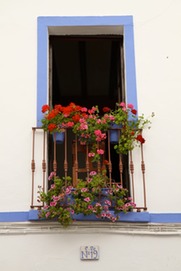
The next day we discovered that Cordoba was in the middle of its "Festival de los Patios Cordobeses": an annual festival, a bit like Australia's open-garden scheme, or Canberra's Floriade Festival, or more locally still, the Christmas lights of East Ivanhoe. But here, people decorate the internal patios of their buildings with flowering plants, trees, ferns, palms and shrubs. There is a competition for the best decorated patio, and this is a very serious event.
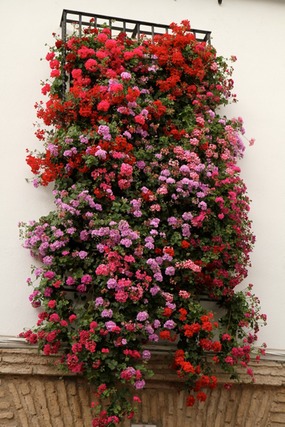
Pots were attached all over the two-story high walls and were filled with deep red, orange, pink, purple geraniums that trailed down the walls and draped them with great big bunches of colour. The courtyards were also filled with larger pots and urns, with mixes of flowering plants including carnations and roses, and these created a weaving sculpture of walkways around the small internal area.
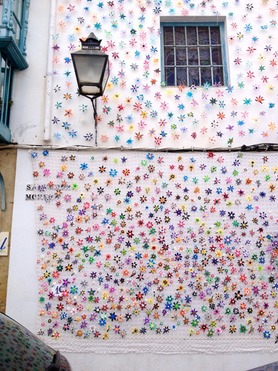
An alternative entrant was the lace-draped apartment building of thirty-something-year-old-dreadlocked-lovelies who had attached hundreds of small plastic flowers to the slightly fluttering lace, creating their own unique wall of cascading colour. Inside the gates the internal courtyard had a mosaic covered floor and columns, and had woven baskets, hats, jewellery, scarves and toys made by these happy people who seemed to float in the courtyard with their paisley-patterned swaying long skirts. It was like a relocated relic of the Haight-Ashbury area of San Francisco in the 1970s.
There are more photos in our album of this extraordinary event.
We'd read about the astounding beauty of the Mezquita, a Muslim Mosque whose first buildings were started in 785, and are predominantly the legacy of Abd al-Rahman 1. This massive single building is held up internally by 856 stone pillars of marble, jasper, granite and onyx. These are topped by arches constructed of alternating cream and red bricks. The arches are numerous, and extend in all directions, repeating the same pattern of red and white that darkens as the building deepens into the dimly-lit distance. Its welcoming repetition of arches and aisles lead us further in to explore the widening expanses and hidden secrets. It is simplicity and elegance, and its serene emptiness suggests that this is an experience of the soul.
The historical interplay between Muslim and Catholic dominance unexpectedly looms in the presence of a Catholic cathedral that sits in the middle of the Mezquita. The Mezquita had been used as a Catholic place of worship from the time of the “Reconquista” in 1236. However the present cathederal was begun in 1523, commissioned by King Charles V, who is said to have lamented his decision saying "You have destroyed something that was unique in the world and replaced it with something you could find anywhere".
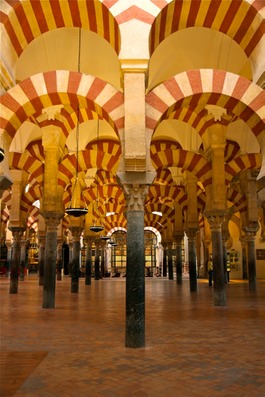
We circled the cathedral as though it is a large anthill in a field of flowers, looking at it from every angle, wondering how it has come to be here, and what thinking made it seem to be the right place to choose to build such a contrasting and contradictory structure.
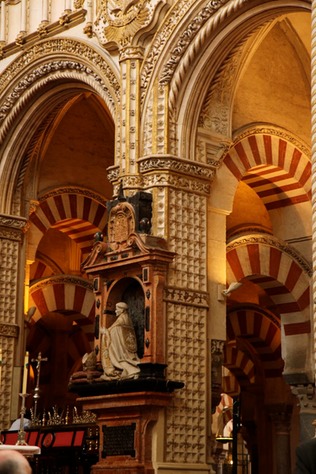
Cordoba finished with a classical concert in a courtyard, a chance meeting and drinks with another Australian couple whose accent attracted our attention, and an appreciation of the significant place that Cordoba had in this land, as the capital city of Al-Andalus.
There are more photos of the Mezquita in our album
